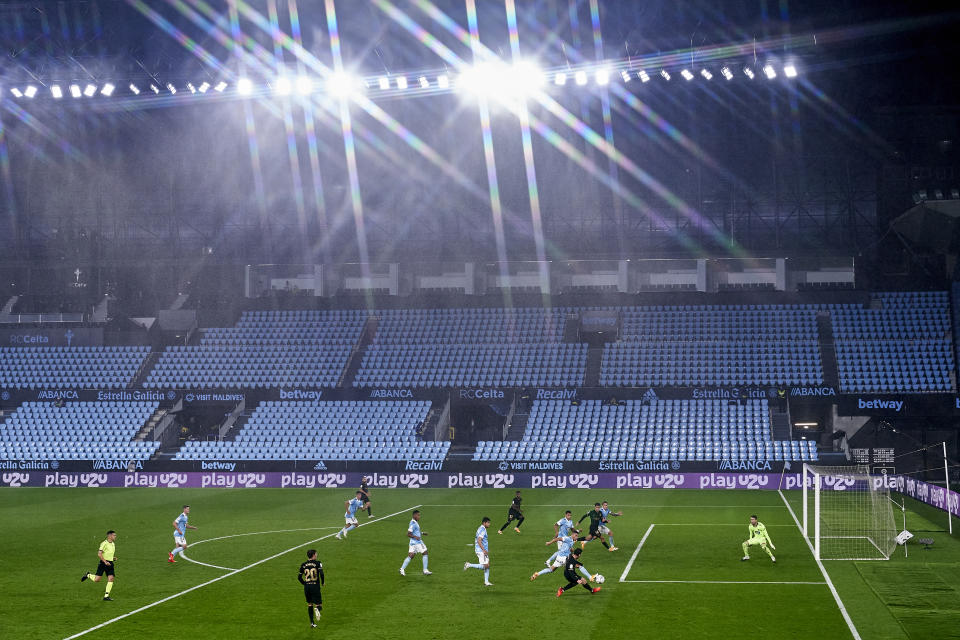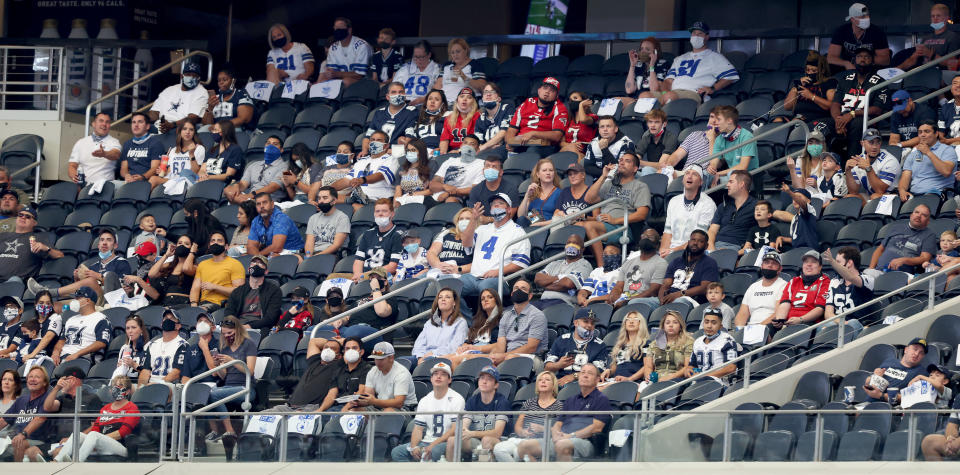U.S. sports should learn from Europe's COVID-19 fan restrictions
There is no sense in our sports pretending the pandemic is over.
Europe, once again, sounds the alarm. The warning signs are there, just as they were in late winter and early spring, when it was ravaged by the COVID-19 pandemic months before the United States. This time, too, European sports act as a bellwether.
The second wave of the pandemic has hit Europe, and many countries are returning to partial lockdowns to curb the resurgence. Measures are being taken in sports, as well. In some countries, professional soccer leagues had resumed letting some fans into the stadiums, albeit in drastically diminished numbers. Or they were planning to. That is being dialed back almost everywhere.
European sports roll back fan attendance
The Dutch league had allowed some fans through its first three rounds of play, permitting less than a quarter of the usual capacity in stadiums. On Monday, the prime minister of the Netherlands announced that stadiums would again close to fans for at least three weeks as the pandemic has roared back.
Spain’s La Liga planned to allow 30 percent of attendance and to reopen stadiums fully in January, but its Ministry of Health has reversed course and stadiums will remain empty for the foreseeable future. Meanwhile, the coronavirus protocols surrounding players and staffs are tighter than ever.

In England, the Premier League and the three professional tiers below had set Oct. 1 as the target date for 30 percent of fans to return. The government has put that on hold.
Italy’s Serie A has allowed up to 1,000 spectators at its games. The nation hit so hard by the first wave is, so far, managing the second one capably, but soccer could be affected nonetheless. Not least because 12 Genoa players have recently tested positive for COVID-19. Its Saturday game with Torino has been postponed, the first Italian game that has been rescheduled since the league became Europe’s first to abandon play in March.
The German Bundesliga has allowed fans from the start of the season at 20 percent of regular capacity, although Bayern Munich had to wait an extra week. A resurgence has put that in jeopardy. German Chancellor Angela Merkel has signaled a return to containment measures would be avoided, even though Germany is, once again, faring relatively well.
“I am sure that life as we knew it will return, families will celebrate again, and clubs, theaters and soccer stadiums will be full again,” Merkel told the German parliament, indicating that such a time is still a ways into the future. “And what a joy this will be.”
In tennis, the French Open is allowing only 1,000 spectators a day.
European sports’ coronavirus strategy includes phased approach
What’s remarkable is that Europe is largely closing the gates to live sports even as the second wave doesn’t yet measure up to the first. Relatively, Europe is handling the pandemic much better than the United States. Stateside, we are still very much in the first wave. Yet, fans have already returned to lots of stadiums.
Several college football programs are playing in front of fans. As of last week, 25 out of 32 NFL teams planned to allow reduced numbers of fans into their stadiums this season. Five teams allowed fans into their home openers. Eight of the 16 scheduled games this weekend would have fans as well — including, originally, the Titans-Steelers game that was postponed. Most were opening their doors by the third home game. The Dallas Cowboys allowed a whopping 21,000 to their home opener, in spite of AT&T Stadium being an indoor facility that isn’t exactly made into an outdoor one just by an open roof. They intend to allow even more fans against the Cleveland Browns on Sunday.

MLB plans to sell 11,500 tickets to the National League Championship Series staged entirely in Arlington, Texas, and Houston.
Some MLS teams reopened their doors, too, with capacity depending on local regulations.
But there is no underlying philosophy or protocol to manage or safeguard all of these reopenings.
“Europe clearly has triggers. ‘Under what circumstances will we allow fans? And under what circumstances will we not?’ And the leagues have thought about that,” Dr. Zachary Binney, an epidemiologist at Oxford College of Emory University, told Yahoo Sports. “Here what you see is just a free-for-all. You see basically a race to the bottom in terms of what local and state public health departments are going to allow.
“We are not bringing fans back in a responsible way. I don’t think we should bring fans back at all, given the level of disease that we are seeing and the new increases we are already starting to see. We’re ignoring our vegetables and going straight to dessert. We didn’t do the work, but we still want the rewards.”
A phased return to sports would have been more responsible, Binney argues. Start by letting in a few thousand spectators. Then wait two weeks — the length of the incubation period for the disease — and reassess. Make sure robust contact tracing is in place at the stadiums, which is mostly not the case now. Then, if things go well, perhaps add a few more thousand to capacity. Two weeks. Contact trace. Assess. Without this carefully managed reopening strategy, there is no telling how the reopening is actually going because it isn’t producing any measurable outcomes.
“The NFL and the SEC and the ACC and the Big 12 are going to push it and push it and push it, and it’s going to look fine until it very much does not,” Binney said. “That’s the problem.”
Instead of waiting out the pandemic to bring back fans for a while, the way European sports did, American sports might be actively contributing to its perpetuation.
Economics driving Americans sports’ reopening
Certainly, the absence of fans has hurt European sports leagues, the way it has the American ones. The lower tiers of English soccer, and indeed all soccer leagues, are loudly signaling their distress. They face an existential crisis, just as many minor league teams stateside will. These are sports clubs that don’t benefit from rich TV rights deals. The turnstile is also their cash register. If nobody is coming through the gates, there is no revenue and there is also no point in playing before empty stands, or in a bubble.
But the economics aren’t used as cover to reopen prematurely in Europe. There is consensus that ending the pandemic takes precedence. No bad-faith arguments are made about stadium workers, in the employ of billionaires, needing the work to survive.
This reasoning is simply being ignored by American sports. Without any real medical or scientific justification to do so, stadiums are reopening.
“Nobody can say that we are doing this in a principled or careful or serious manner when it’s Jerry Jones and the indoor Dallas Cowboys Stadium that’s leading the charge,” Binney said. “That is the stupidest and most reckless way we could do it.”
The pandemic isn’t over. The first wave isn’t even over. We’re not ready for fans yet.
European stadiums are closing their doors because to keep them open would only prolong the larger problem. For the second time in this pandemic, Europe’s warning is worth heeding. That is, if we want to play sports at all.
Leander Schaerlaeckens is a Yahoo Sports soccer columnist and a sports communication lecturer at Marist College. Follow him on Twitter @LeanderAlphabet.
More from Yahoo Sports:

 Yahoo Lifestyle
Yahoo Lifestyle 


